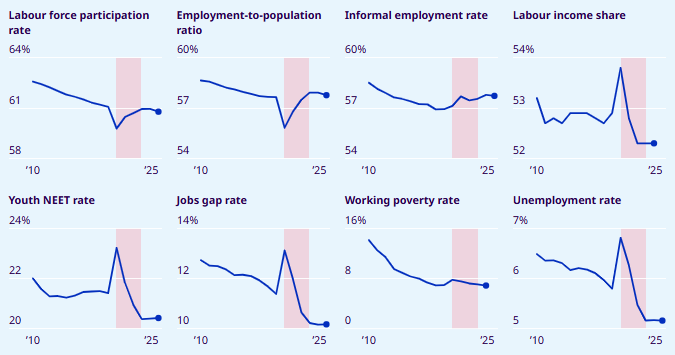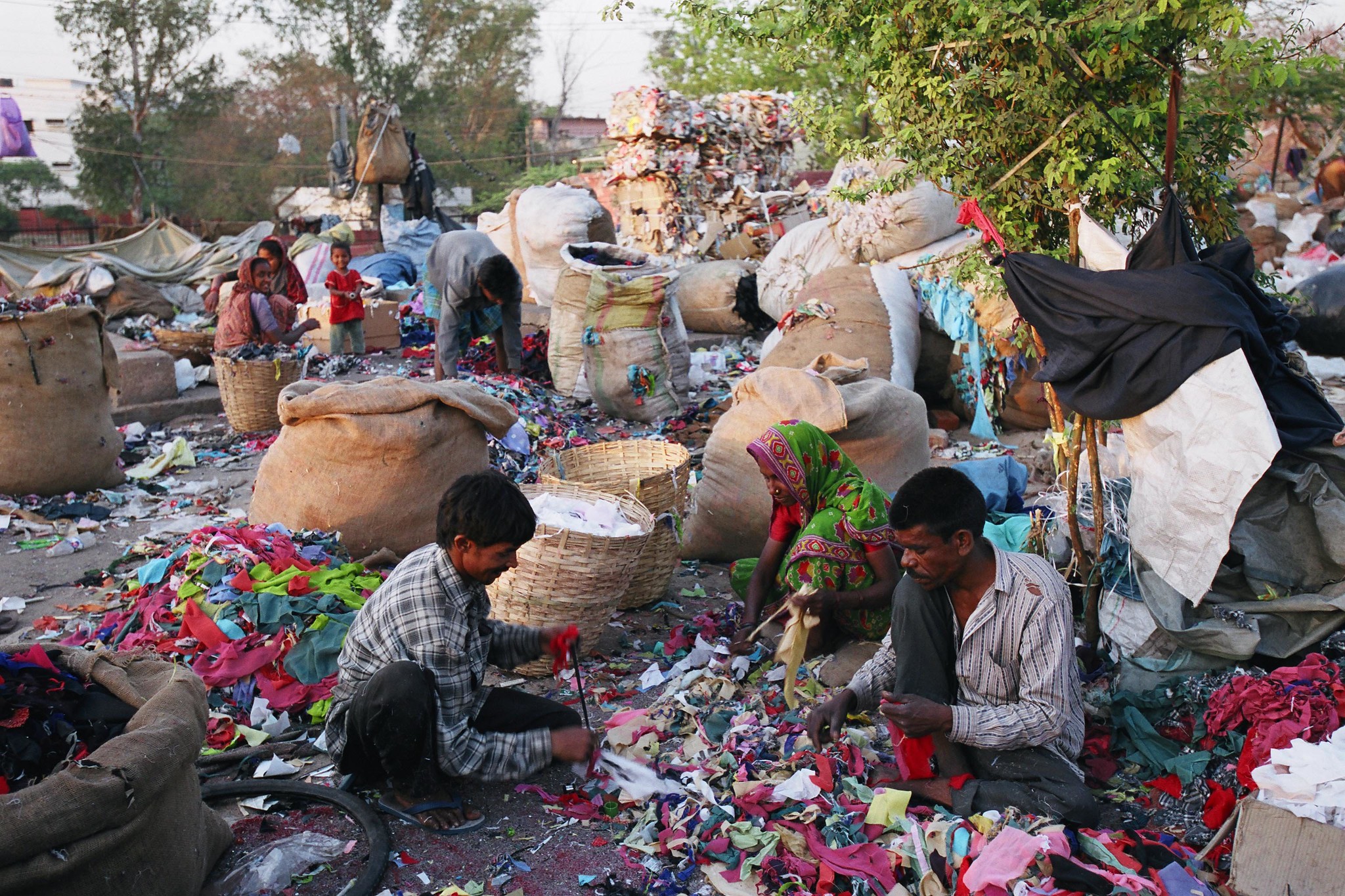Indicators and data tools
Table of Contents
Quick csv downloads
- Global trends at a glance

Youth NEET rate refers to the share of youth aged 15 to 24 not in employment, education or training. Jobs gap rate is defined as the sum of the unemployed, the potential labour force and willing non-jobseekers divided by the sum of the extended labour force and willing non-jobseekers. Working poverty rate refers to the share of employed persons living below US$2.15 PPP. The red-highlighted period corresponds to the years affected by the COVID-19 pandemic.
Source: ILO Modelled Estimates (ILOEST) database, ILOSTAT Get the data
Indicator catalogue
Get all data available for a specific indicator.
| Indicator | Frequency | Database | Subject | Download (with labels) | Download (with codes) | Data explorer |
|---|---|---|---|---|---|---|
| SDG indicator 1.1.1 - Working poverty rate (percentage of employed living below US$2.15 PPP) (%) | Annual | SDG Labour Market Indicators (ILOSDG) | Working poverty | .csv .dta .xlsx | .csv.gz | View |
Country catalogue
Get all indicators available for a specific country, territory or region.
| Indicator | Frequency | Database | Subject | Download (with labels) | Download (with codes) | Data explorer |
|---|---|---|---|---|---|---|
| SDG indicator 1.1.1 - Working poverty rate (percentage of employed living below US$2.15 PPP) (%) | Annual | SDG Labour Market Indicators (ILOSDG) | Working poverty | .csv .dta .xlsx | .csv.gz | View |
- You can also get indicators for countries within a specific ILO region from the following pages.
- Data tools
- Related pages






















